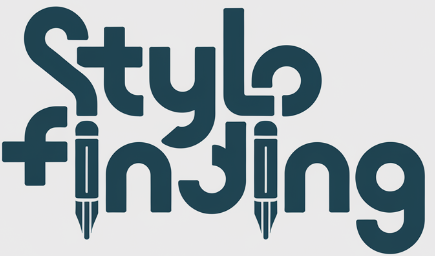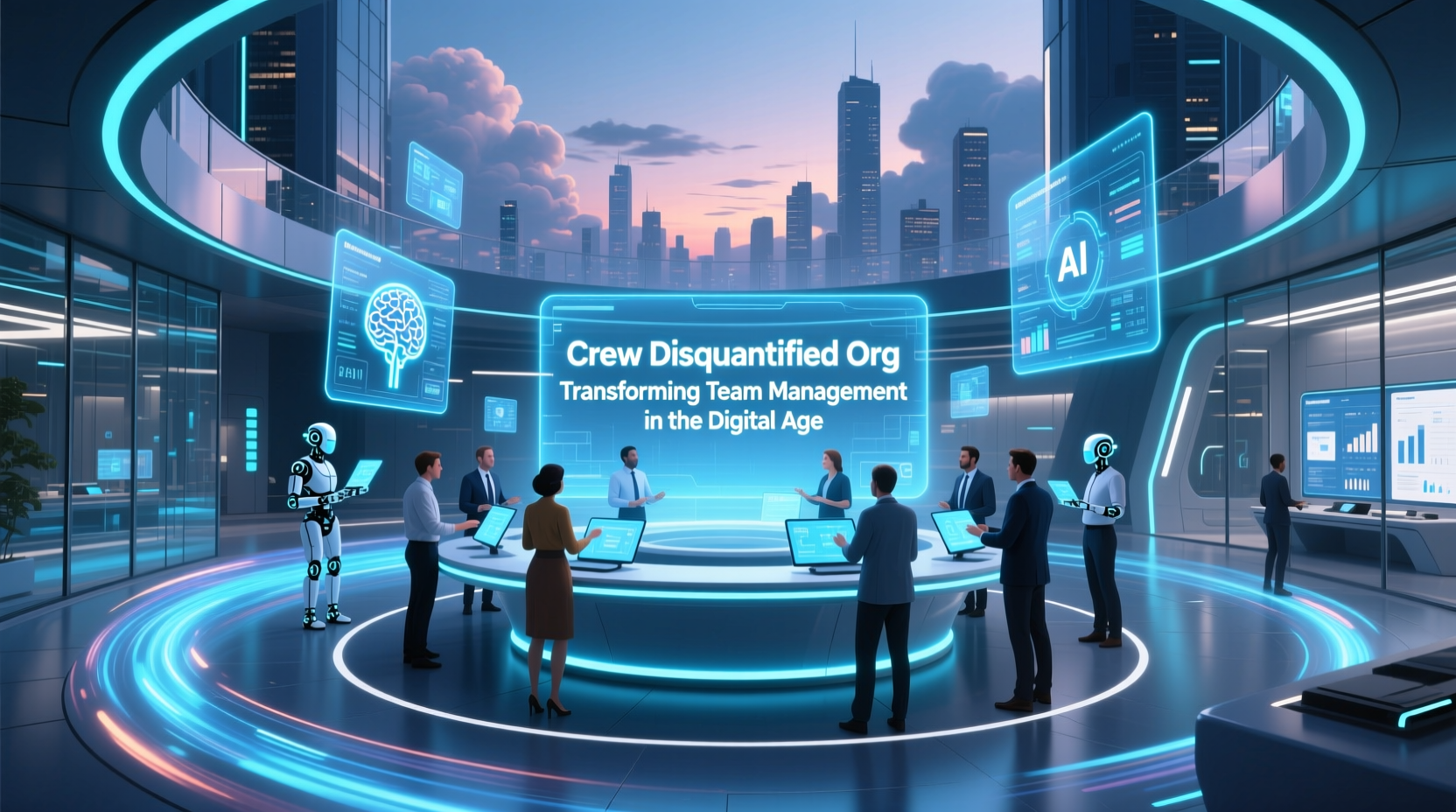The way organizations structure teams has always shaped how work gets done. For decades, companies relied on rigid hierarchical structures with top-down decision-making. This approach worked in stable, predictable markets. But in the digital age, change happens so fast that old models can feel like anchors.
Enter the Crew Disquantified Org model a bold rethinking of team management. Instead of treating people as interchangeable units measured by narrow quantitative assessments, this model emphasizes fluid teams, skill-based formation, and distributed leadership. It focuses less on rigid numbers and more on outcome-focused metrics, creativity, and adaptability.
As Dr. Miranda Chen, an organizational psychologist, puts it:
“In today’s knowledge-driven economy, organizations thrive not by controlling people through layers of management but by unleashing collaboration and empowering crews.”
This article explores what a Crew Disquantified Org is, how it works, the philosophy behind it, its benefits, and its challenges. We’ll also look ahead to the future of organizational transformation, where AI, digital tools, and hybrid models shape the next wave of work.
The Philosophy Behind Crew Disquantified Org

Breaking Down Traditional Hierarchies
In traditional organizations, managers sat at the top of a pyramid. Orders flowed downward, and feedback rarely traveled upward. This system created stability but also slowed down innovation.
- Decisions required approvals across layers.
- Teams were siloed and rarely collaborated outside their function.
- Creativity was often stifled by bureaucratic friction.
By contrast, Crew Disquantified Orgs break these pyramids into cross-functional crews that can form and dissolve as needed. Leadership becomes distributed rather than concentrated. Teams focus on solving problems, not protecting turf.
Think of it like moving from a classical orchestra, where one conductor directs everyone, to a jazz ensemble where each musician takes turns leading and improvising.
Quantification vs. Disquantification
At the heart of this shift is the idea of quantification versus disquantification.
- Quantification: Traditional companies often reduce people to numbers. Performance reviews, productivity scores, sales quotas — these quantitative assessments dominate.
- Disquantification: The new model values qualitative assessments as much as numbers. It recognizes creativity, emotional intelligence, knowledge sharing, and adaptability.
As Marcus Wong, an organizational theorist, explains:
“When you only measure what’s easy to count, you miss what’s valuable. Disquantification doesn’t mean ignoring metrics, it means balancing them with human insight.”
A Crew Disquantified Org still uses performance metrics and transparent evaluation metrics, but it blends them with qualitative feedback, storytelling, and continuous peer review.
Implementing a Crew Disquantified Org Structure
Assessment and Preparation
Before adopting this model, organizations must understand where they stand. This phase involves assessment and preparation:
- Skill inventories: Map employee skills beyond job titles. Include hidden talents like language skills, design knowledge, or coding experience.
- Leadership readiness: Identify employees who can thrive in distributed leadership. Not everyone adapts easily to leading without authority.
- Cultural surveys: Gauge openness to change. A 2023 survey by the Global Innovation Institute found that 62% of employees in traditional firms feared losing clarity under fluid models.
- Workflow audits: Analyze bottlenecks in communication and decision-making.
Assessment Tools for Transition
| Area | Tools & Methods | Purpose |
|---|---|---|
| Skill Mapping | Databases, AI skill scanners, surveys | Identify hidden and core skills |
| Leadership Readiness | Peer evaluations, simulations, workshops | Spot future crew leaders |
| Cultural Fit | Pulse surveys, interviews, sentiment analysis | Measure resistance and readiness |
| Workflow Efficiency | Process audits, digital tracking | Highlight bottlenecks |
Core Implementation Strategies
Once readiness is clear, companies move to actual implementation. Strategies include:
- Building cross-functional crews: Form teams from different departments to solve specific challenges.
- Rotating leadership roles: Allow different crew members to take leadership depending on the task.
- Continuous review cycles: Replace annual appraisals with continuous, multi-directional assessments.
- Skill-based team formation: Use skill mapping to assemble the right people for the right project.
- Transparent evaluation metrics: Share outcomes openly so everyone understands success criteria.
Technology Enablers
Technology powers the transition. Modern digital communication tools and AI systems make fluid team assembly possible:
- AI-powered team formation tools (like Gloat or Eightfold) analyze skills and match people to projects.
- Digital collaboration platforms like Slack, Notion, and Jira provide communication infrastructure.
- Data-driven dashboards track both quantitative and qualitative performance in real time.
- Feedback mechanisms integrated into daily workflows encourage continuous improvement.
Benefits of the Crew Disquantified Org Model
Enhanced Agility and Innovation
When companies embrace fluid and adaptable teams, they gain organizational agility. Teams can quickly pivot to meet market demands.
- In a survey by the Global Innovation Institute (2023), companies adopting crew-based models reported 25% faster project delivery.
- Cross-functional collaboration fosters fresh ideas since diverse expertise converges on problems.
Improved Talent Utilization and Satisfaction
Employees want more than just a paycheck; they want meaningful work. By aligning tasks with skills and interests, Crew Disquantified Orgs improve talent utilization and employee satisfaction.
- Skill mapping prevents underutilization.
- Employees report higher engagement and retention rates when they rotate across projects.
- Opportunities for cross-functional skill development reduce burnout and improve growth.
Quote from Dr. Miranda Chen:
“People don’t want to be stuck in boxes anymore. They want to flex their skills, grow, and contribute in ways that matter.”
Cost Efficiencies Through Optimization
Traditional organizations spend heavily on management overhead. Layers of supervisors, long meetings, and redundant reporting cost both time and money.
By adopting Crew Disquantified Orgs, companies achieve:
- Cost efficiencies through leaner structures.
- Smarter project staffing via data-driven team composition.
- Reduced wasted effort, since crews dissolve after projects end.
Challenges and Considerations
Cultural Resistance
Shifting from hierarchy to fluid teams challenges long-standing beliefs. Employees used to clear roles may feel lost. Leaders may resist losing control.
Common resistance points:
- Fear of unclear authority.
- Worries about job security.
- Anxiety about constant role shifts.
Measurement Complexities
Moving beyond quantification introduces challenges:
- How do you measure creativity or collaboration?
- How do you balance qualitative assessments with hard numbers?
Organizations must design transparent evaluation metrics that combine both quantitative and qualitative assessments.
Coordination Overhead
Without clear hierarchies, organizations risk coordination overhead. Too many crews may duplicate work or lose sight of larger goals. Effective communication infrastructure and strong digital tools are critical here.
Security and Compliance
Fluid organizational structures can complicate compliance with regulations. Companies must ensure data privacy and proper documentation even as teams constantly shift.
Future Outlook and Evolving Practices
AI-Powered Team Formation
Artificial intelligence will play a massive role in the future of team management. Algorithms can analyze skill inventories, project needs, and even personality compatibility to assemble crews instantly.
- AI-driven matching improves efficiency.
- Predictive analytics anticipate skill gaps before projects begin.
- Adaptive models reassign team members in real time.
Hybrid Models
Not every company can go fully disquantified. Many adopt hybrid organizational models, blending traditional structures with fluid crews.
- Case example: A global consulting firm keeps core departments but uses project-based crews for innovation labs.
- This balance provides stability while still boosting agility.
Enhanced Feedback Systems
The old annual review is fading. Instead, continuous, multi-directional assessment becomes the norm.
- Feedback systems enable multi-directional feedback — from peers, leaders, and even AI tools.
- These systems promote employee empowerment and stronger engagement.
The Role of Web3 and Decentralization
Emerging technologies like Web3 and DAOs introduce new models for collaboration. Smart contracts can govern task ownership, while decentralized organizations mirror the crew disquantified org philosophy.
Conclusion
The Crew Disquantified Org is not just a management fad. It represents a fundamental organizational transformation driven by the needs of the digital age. By moving beyond rigid hierarchical structures, organizations unlock innovation, increase employee satisfaction, and achieve real cost efficiencies.
Challenges like cultural resistance, measurement complexities, and coordination overhead remain. But with the right communication infrastructure, digital communication tools, and thoughtful change management, the rewards outweigh the risks.

Tony Smith, a seasoned fashion writer with 3 years of experience, shares insights on celebrity style at StyloFinding.com. Tony brings you the latest trends, celebrity fashion tips, and style guides to keep you in the know. Explore fresh takes on celebrity looks at https://stylofinding.com/

